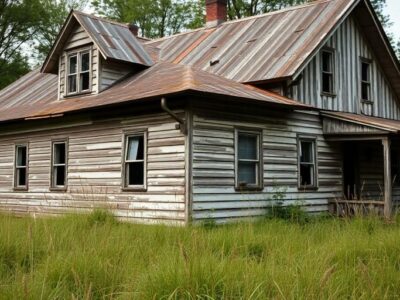As a major metropolitan area in Texas, Dallas has become a hub for sustainable and eco-friendly building practices. The use of reclaimed wood in architecture and design has become increasingly popular in Dallas, as it offers a unique and environmentally-friendly option for building projects. Reclaimed wood, also known as salvaged wood, is a type of lumber harvested from old buildings, barns, and other structures.
A sustainable and eco-friendly material, reclaimed wood in Dallas TX (Texas), has gained popularity in recent years for its rustic charm and versatility. This article will explore the innovative uses of reclaimed wood in architecture and design, highlighting its benefits and potential.
Exterior Applications
One of the most popular uses of reclaimed wood in the architecture is as an exterior cladding material. Due to its naturally weathered appearance, reclaimed wood can add character and warmth to a building’s façade. It is also ideal for sustainability-focused building projects, as it reduces waste and the need for new materials.
Reclaimed wood can also be used in outdoor spaces like patios and decks. It is a durable material that can withstand harsh weather conditions and the test of time. Reclaimed wood can also be used to construct fences, pergolas, and other outdoor structures, adding a unique and rustic touch to the landscape.
Interior Applications
Reclaimed wood is an incredibly versatile material used in many interior applications. One of the most popular uses of reclaimed wood is flooring. Reclaimed wood flooring adds a natural and organic feel to any interior space, and its durability makes it ideal for high-traffic areas. It can be used in residential and commercial settings and can be finished in various ways to achieve different looks.
In addition to flooring, reclaimed wood can be used for accent walls, ceiling beams, and furniture. Using reclaimed wood for furniture is a sustainable and eco-friendly choice that is becoming increasingly popular. Reclaimed wood furniture adds warmth and character to any space and is a great way to incorporate a natural and organic element into your décor.
Innovative Applications
Reclaimed wood is not just limited to traditional uses in architecture and design. It has been used innovatively and creatively to create unique and striking installations. For example, reclaimed wood can create sculptural elements, such as a feature wall or a free-standing sculpture. It can also be used to create functional art, such as a reclaimed wood staircase or a custom door.
Reclaimed wood has also been used in the creation of lighting fixtures. A reclaimed wood chandelier or pendant light can add a rustic touch to any interior space, and the natural variations in the wood grain can create a warm and inviting glow.
Sustainability and Environmental Benefits
One of the most significant benefits of using reclaimed wood in architecture and design is its sustainability. Reclaimed wood reduces the demand for new timber, which helps conserve forests and reduce the construction industry’s carbon footprint. Additionally, using reclaimed wood reduces waste and the amount of material sent to landfills.
Reclaimed wood’s unique character and history cannot be replicated with new materials. The natural weathering and patina of reclaimed wood tell a story and add character to any space. Architects and designers preserve a piece of history using reclaimed wood while creating something new and beautiful.
Conclusion
You can find reclaimed wood in Dallas TX throughout its architecture and design scene, from commercial buildings’ exterior cladding to residential spaces’ flooring and furniture. In addition to its sustainable benefits, reclaimed wood also adds warmth and character to any space, making it a popular choice for those looking to incorporate a natural and organic element into their décor. As the construction industry focuses on sustainable and eco-friendly building practices, you can expect more innovative uses of reclaimed wood in the coming years.








Comments